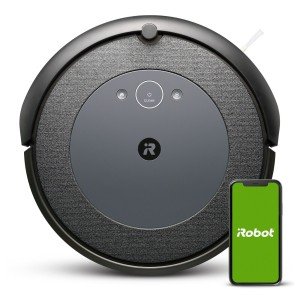A Journey Back In Time The Conversations People Had About Robot Hoover…
페이지 정보
작성자 Wilburn 댓글 0건 조회 307회 작성일 25-06-13 04:35본문
The Evolution of Robot Hoovers: Revolutionizing Home Cleaning
Robot hoovers, likewise understood as robotic vacuum cleaners, have actually transformed how individuals approach family cleaning tasks. At first presented in the late 1990s, these autonomous machines have progressed rapidly due to developments in technology, artificial intelligence, and artificial intelligence. Today, they are equipped with an array of features that make them extremely efficient in keeping tidiness in living areas. This post explores the history, working, advantages, and future of robot hoovers.
The History of Robot Hoovers
The idea of robotic vacuums dates back to the 1970s, but it wasn't up until the launch of the Roomba by iRobot in 2002 that they gained traditional attention. The Roomba was developed to immediately browse numerous surfaces, avoiding challenges while effectively cleaning floors. Ever since, a number of significant developments have actually happened, including:
| Year | Development |
|---|---|
| 1996 | Very first model robotic vacuum cleaner developed by a Japanese company. |
| 2002 | iRobot launches the Roomba, mass popularizing robotic vacuums. |
| 2004 | Intro of the first Roomba with a dirt detection sensing unit. |
| 2011 | Introduce of designs with cordless abilities and smartphone integration. |
| 2020 | Advanced models including AI, boosted navigation systems, and mopping capabilities. |
How Robot Hoovers Work
Robot hoovers operate on a combination of sensing units, electronic cameras, and algorithms that enable them to clean effectively. Secret parts of these gadgets include:
Sensors:
- Obstacle Avoidance Sensors: Detect walls, furniture, and even stairs, preventing accidents and falls.
- Dirt Detection Sensors: Identify areas that need more extensive cleaning.
Navigation:
- Gyroscopes: Help figure out the robot's orientation and motion.
- Cameras and Lidar: Enable mapping of the home environment to produce optimal cleaning paths.
Cleaning Mechanisms:
- Vacuum Motors: Generate suction to select up dirt and debris.
- Brush Rollers: Agitate dirt out of carpets for deeper cleaning.
Power Supply:
- Batteries: Rechargeable lithium-ion batteries offer the essential power for prolonged cleaning cycles.
User Interface:
- Mobile Apps and Smart Home Integration: Users can arrange cleanings, screen efficiency, and control the robot remotely.
Benefits of Robot Hoovers
Robot hoovers use numerous advantages, making them an enticing choice for contemporary households:
- Time-Saving: Automated cleaning allows users to focus on other jobs while the robot efficiently cleans floors.
- Convenience: Many models can be set up for cleaning sessions, making sure that homes remain tidy without manual effort.
- Ease of access: Ideal for people with mobility challenges or hectic lifestyles, enabling easier home maintenance.
- Consistent Cleaning: Regular, automated cleanings reduce the accumulation of dirt and irritants, contributing to a healthier living environment.
- Smart Technology: Integration with smart home systems allows for increased control and personalization.
Limitations of Robot Hoovers
Regardless of their advantages, robot hoovers come with specific restrictions:
- Navigation Challenges: They may struggle in messy spaces or with certain floor types such as high-pile carpets.
- Battery Life: Most models require regular charging, which can limit cleaning duration.
- Upkeep: Regular cleaning of filters, brushes, and emptying dust bins is required for optimal performance.
- Price: Advanced models can be expensive compared to conventional vacuum cleaners.
The Future of Robot Hoovers
As technology continues to develop, the future of robot hoovers looks promising. Expected improvements consist of:
- Improved AI: Enhanced algorithms will enable much better object acknowledgment and dynamic mapping of spaces.
- Hybrid Models: Integration of vacuuming and mopping capabilities in one gadget will supply an extensive cleaning solution.
- Increased Autonomy: Future designs might browse even the most complex environments without human intervention.
- Sustainability: Battery technology improvements will result in longer-lasting, more energy-efficient robots.
Regularly Asked Questions (FAQs)
1. Are robot hoovers efficient for family pet hair elimination?
Yes, lots of robot hoovers are particularly designed to take on animal hair with effective suction and specialized brushes that lower tangling.
2. How do robot hoovers navigate around furnishings?
Robot hoovers use a mix of sensing units and cameras to find challenges, allowing them to browse around furnishings and avoid accidents.
3. Can robot hoovers tidy carpets?
A lot of modern robot vacuum cleaner best buy hoovers are effective on both hard floors and carpets. It is a good idea to check the requirements of individual designs for specific efficiency.
4. Do robot hoovers need programming?
Many robot hoovers include user-friendly apps that allow owners to set schedules and personalize cleaning preferences, making shows straightforward.

5. How much do robot hoovers cost?
Rates for robot hoovers differ commonly, ranging from ₤ 200 to around ₤ 1,500, depending upon functions and brand name.
Robot hoovers have actually come a long method considering that their inception, offering an effective and practical cleaning solution for contemporary families. Their increasing capability and intelligence make them a useful choice for individuals wanting to simplify their cleaning regimens. As innovation continues to advance, robot hoovers will likely become even more capable, supplying additional functions that accommodate the progressing needs of users. Their journey from novelty to requirement underscores an essential shift in how society approaches home maintenance, marking a substantial turning point in the crossway of technology and life.
댓글목록
등록된 댓글이 없습니다.


